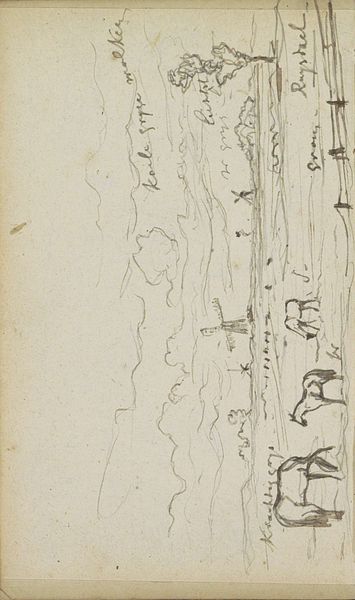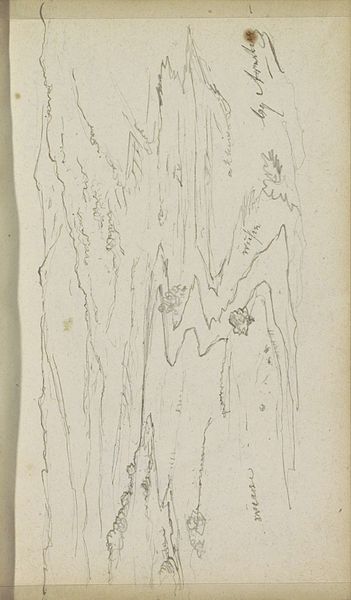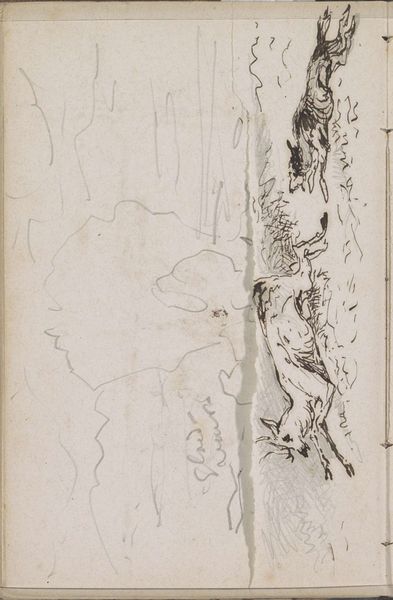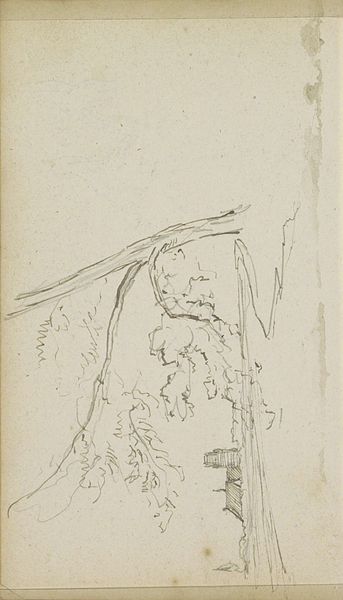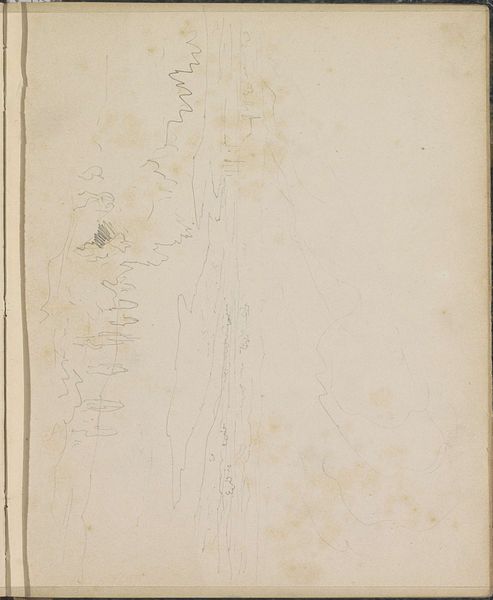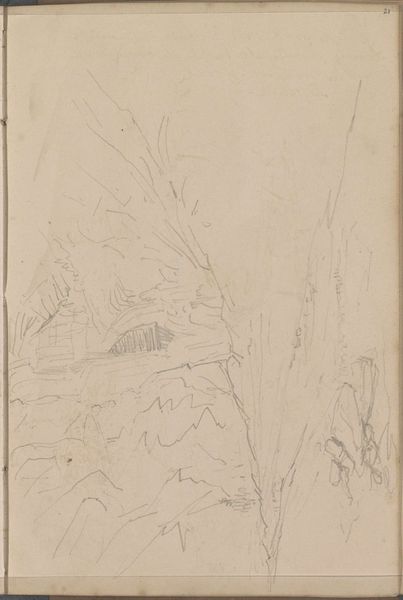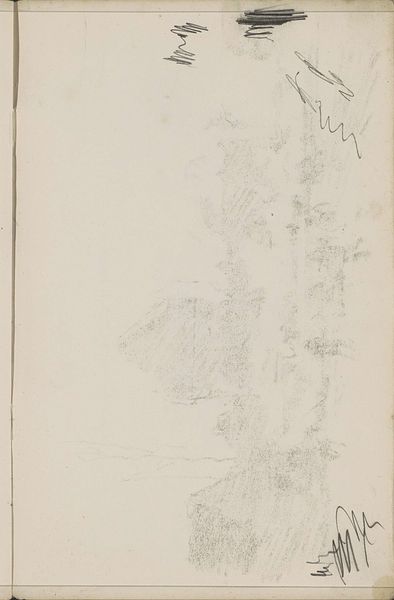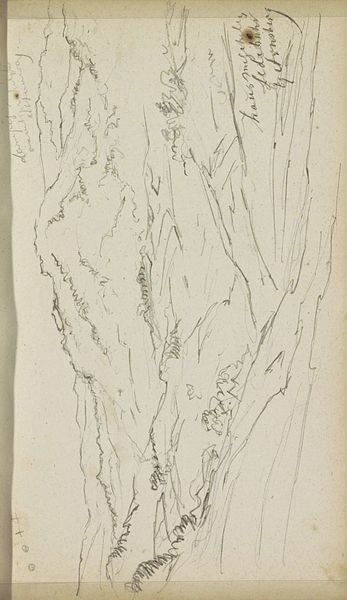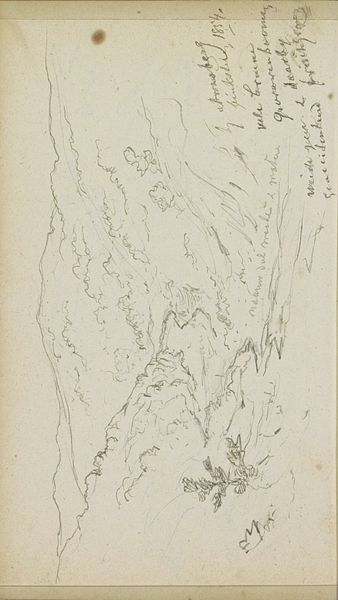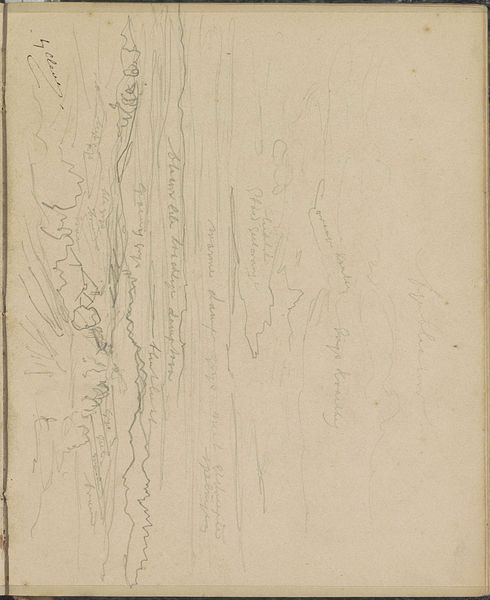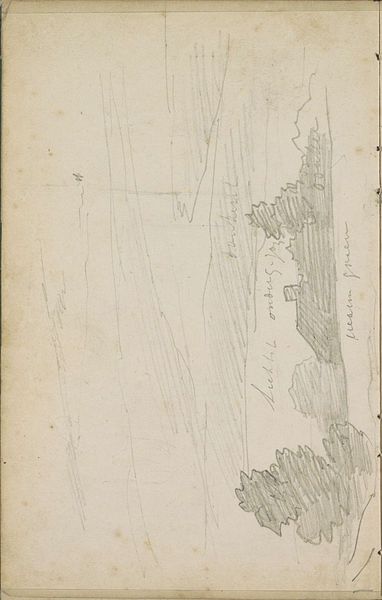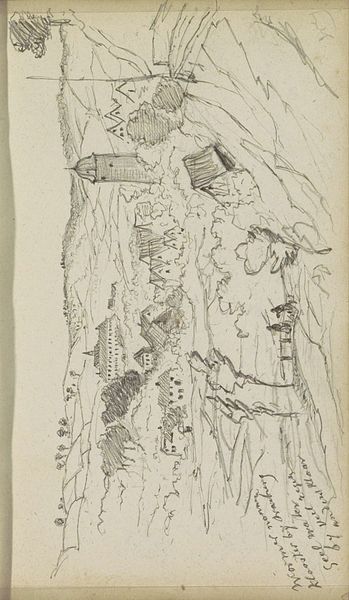
drawing, paper, ink, pencil
#
drawing
#
animal
#
landscape
#
figuration
#
paper
#
ink
#
pencil
Copyright: Rijks Museum: Open Domain
Editor: Here we have "Two Deer in a Mountainous Landscape," a drawing from 1858 by Johannes Tavenraat, made with pencil and ink on paper. The quick, almost frantic lines create a sense of immediacy. What stands out to you about the production of this work? Curator: I'm interested in the choice of materials. The artist opted for the accessibility and portability of pencil and ink on paper. Why not oil paint on canvas, the 'high art' medium of the time? It suggests a process rooted more in observation and documentation, a readily reproducible study rather than a finalized statement. Was this drawing part of a larger series? Where were such drawings typically displayed or consumed? Editor: That's a great point! The portability factor shifts the focus. Thinking about reproducibility, would this have been considered a valuable commodity back then? Curator: Perhaps not intrinsically. But consider the social context: 1858. Industrialization was transforming the landscape, impacting traditional ways of life. Landscape drawings like these catered to a growing urban audience yearning for the romanticism of nature, becoming increasingly commodified as prints. The labour involved in their creation, their potential mass reproduction, and ultimate consumption highlights an emerging market for idyllic imagery. What is depicted is no longer for the people, but instead available for purchase and trade. Does the rough finish aesthetic add to its value or detract? Editor: So, it's less about the unique artistic touch and more about the potential for wider dissemination and sale. It adds another layer to its meaning. I see the landscape element of it now in the social sense as it becomes another symbol that changes in light of the impact of industrialism. Thanks! Curator: Indeed. Thinking about it as less of an autonomous piece, but an economic product as well is an important understanding that reframes traditional approaches to landscapes.
Comments
No comments
Be the first to comment and join the conversation on the ultimate creative platform.

